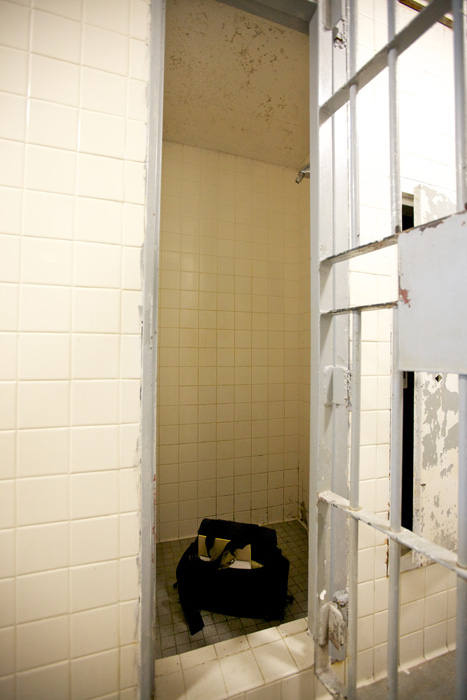Shower Stall used as Holding Cell
Shower stalls were used in lieu of a crisis intervention cell when there were no cells available. They also used interview booths, recreation shakedown areas and actual holding cells, none of which were suicide resistant and most of which had no bathrooms in them.
The camera bag in the bottom of the stall shows its size. The only way to flush the result of staying in here too long was to get the guards
to turn on the water so as to wash it down - if one could get their attention. Stays in here lasted anywhere from a few hours to a few days. Prison personnel say the practice has been discontinued.
|

|